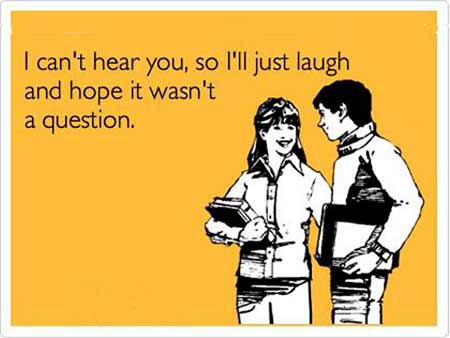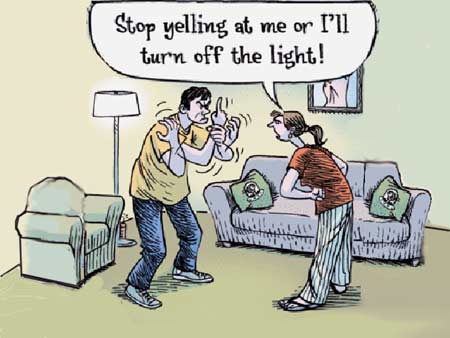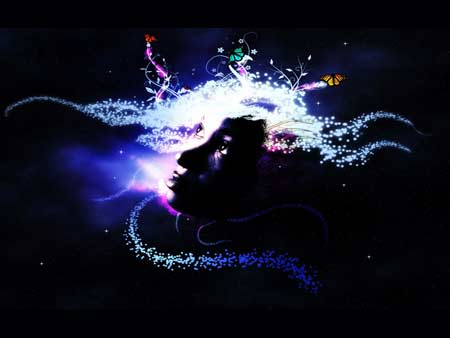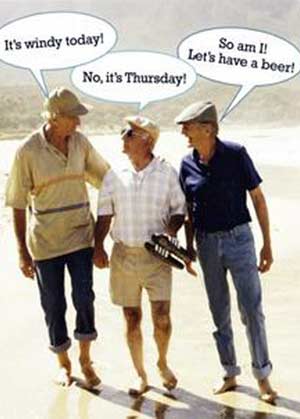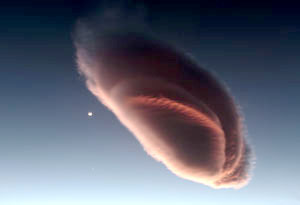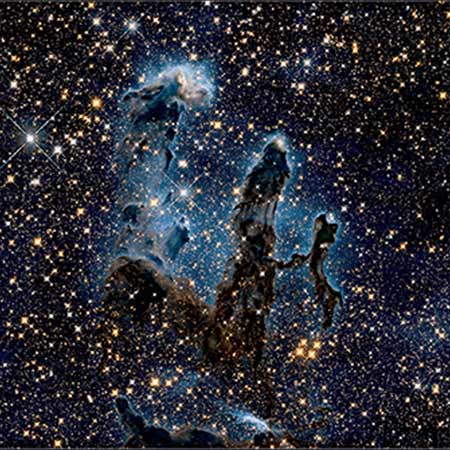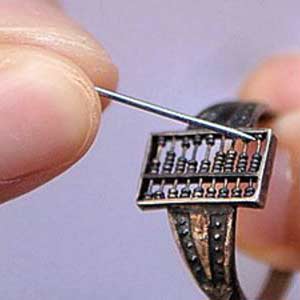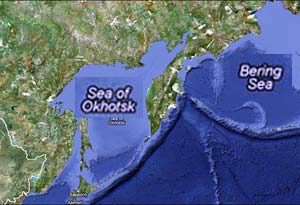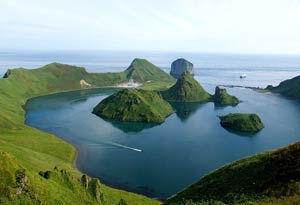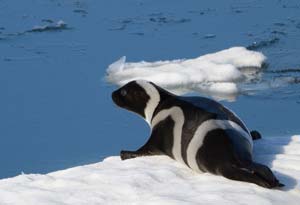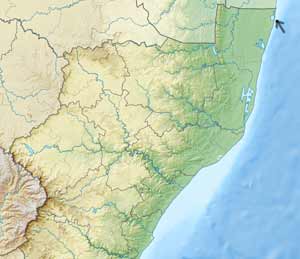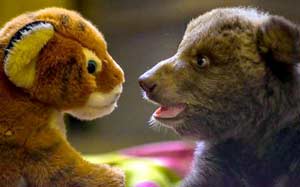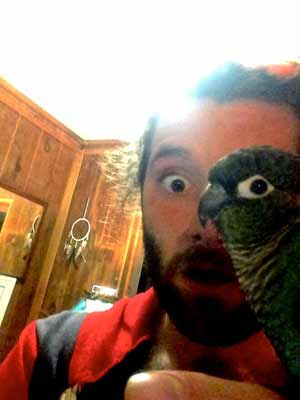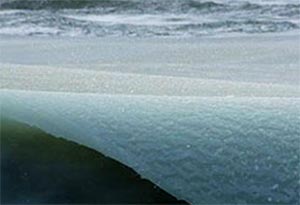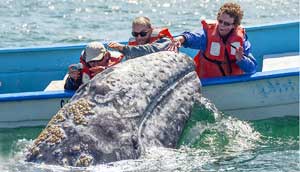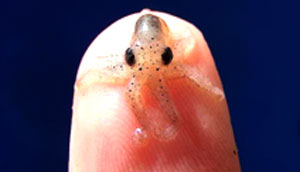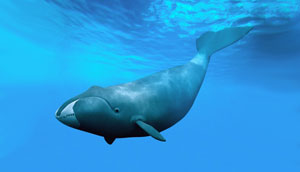Most people would die sooner than think — and so they do.
—Hearing Yourself Think
April 10, 2015
We have to think a lot inside our heads to really determine who we are and what it is we want from life. Inside our heads, we are what we think. Outside our heads, we’re what others think. But what would your inner life be like if you had no language inside your head? How would you think things over, how would you talk to yourself then? How would you effectively explore who you are and who you would like to become?
A prelingual deaf individual is someone who is born with a hearing loss or someone whose hearing loss occurs before they begin to speak. Deafness occurs in approximately one in 1,000 births and still more children become deaf after birth due to illness or injury. The numbers of children affected don’t seem to be tracked by most countries, yet the impact on these children’s lives is immense. Some children can be helped to a degree by cochlear implants while others cannot.
I feel that special emphasis should be placed on ensuring that any profoundly deaf child born to non-sign-language-proficient parents are assigned a home instructor to teach him or her (and any willing family members) how to use sign language. It is urgent this be done during the period from the deaf child’s birth until about age four, which is before the brain’s language centres have “hardened” (thereafter making the learning of sign language a far more uphill struggle). Children don’t learn to read and write before the age of four, but they CAN easily learn sign language by that age. Many deaf children will sign their first word around 8 months of age and use 10 or more signs by 12 months of age.
Why Is This Important?
Are there limits to what our minds can grasp? The idea that certain aspects of reality are beyond us might at first seem implausible. After all, there doesn’t seem to be any aspect of the world that we can’t think about. Is there any reason to take the possibility of cognitive limits seriously? There is.
Given that the machinery of human thought is part of our biology, there is every reason to suspect that it suffers from the kinds of bugs and blind spots that constrain other biological systems. It’s doubtful whether chimpanzees possess the ability to think about quantum mechanics, for example. Perhaps that’s one of the limitations of lacking language. If there are parts of reality that are inaccessible to other thinking species, why should we assume that no part is inaccessible to us? But it is one thing to grant that some aspects of reality lie beyond our grasp, but quite another to identify what they might be.
This is similar to how it feels to be profoundly deaf without knowing sign language:
Susan Schaller is a writer and human rights advocate. She began studying American Sign Language (ASL) at university in one of the first programmes to present ASL classes to hearing students. She chose to sit in on the class randomly, and by doing so, she says it changed her life. In 1970, she became an interpreter for the deaf at a local community college. She was hired by the Reading Skills Class, a class of deaf adults learning to read English. It was here that she met Ildefonso (a pseudonym), an illegal alien who had worked at a variety of jobs all over the United States but had somehow managed to get by without knowing how to add or subtract or even how to tell time. (In order to get to work on time he memorised how the face of the clock looked.) Within a few minutes of introductions, it became clear to her that Ildefonso didn’t understand her signs as a form of communication, but he diligently copied her movements hoping to derive some meaning. Ildefonso seemed to see the signs as commands more than representations of abstract concepts, and for several days he appeared to make no progress. It wasn’t until she began signing the word “cat” to an imaginary student that Ildefonso suddenly understood her attempt to communicate meaning, at which point he began to cry.
Schaller says, “For 27 years he had no idea that there was sound. He could see people’s mouths moving. He could see people responding. He thought we figured everything out visually. And he thought, ' must be stupid.’ I took out a book and made the sign for book. But the sign for book looks like opening up a book. So he thought I was ordering him to open a book. He always thought I was asking him to do something. It was very difficult. If I gave him the sign for standing up he thought I wanted him to stand up. And so I couldn’t have a conversation with him. It was the most frustrating thing I have ever done. But he finally learned. One area that everyone wants to know about is what it was like for him to be without language — what was going on in his head? After he learned how to communicate with me, I asked him that. He told me that was the dark time in his life. Learning language was like the lights came on.”
Over the next four months, Ildefonso learned his name, Schaller’s name, hundreds of words, simple arithmetic and geometry, the concept of time, and more. His determination and intelligence were remarkable, and when he and Schaller parted — he had to leave school to take a job — he was well on his way toward fluency.
Ms Schaller discovered that several teachers have worked with deaf people who have no language, many of whom are from different cultures or who’ve had astonishingly protective parents. Seven years after he left her class, she found Ildefonso again. He was working as a gardener for a hospital in Los Angeles and was the proud holder of a green card. His signing had advanced by light years. He took her through back alleys to a tiny room where she discovered a virtual lost tribe: people who have no language. No one had a name there; introductions were really descriptions. And each person had peculiar ideas about cause and effect in life. One discovered that the number 1986 seemed to satisfy authorities and believed that those shapes were endowed with magic. The people told stories, but it could only be done through mime, each movement an invention. One person might repeat a gesture but, as Ms Schaller realised, most communication was trial and error. She witnessed a testament to how slow and painful the evolution of language must have been.
In contrast, here’s what language did for one primate:
Michael (a silverback gorilla whose parents were killed while he was still a baby) had a vocabulary of over 600 signs, some of which he learned from Koko (another gorilla in the same facility). They both used “stink” for “flowers”, and “lip” for “girl”. Because of the musculo-skeletal difference between apes and humans, the two gorillas employed a modified version of American Sign Language, adapted for their physical abilities.
In sign language, deaf humans often create new signs by combining two or more signs to express a concept for which they have no sign. Additionally, repetition and exaggeration of signs is used to create emphasis. Repetition, exaggeration and the creation of new signs by combining signs are techniques which are also naturally used by simians.
Michael learned 20 words within his first year with The Gorilla Foundation. The following is an example of Michael’s later description of an event that is thought by humans at The Gorilla Foundation to be the death of his mother — killed by poachers when he was quite young:
“Squash meat gorilla. Mouth tooth. Cry sharp-noise loud. Bad think-trouble look-face. Cut neck lip [girl] hole.”
Language opens doors to thought.
How Many People Are Affected?
Few countries seem to track the numbers of their citizens who are deaf. Canada has never done a census of them. The US did one in 1972 and has extrapolated figures since. Mostly countries just come up with rough estimates.
Questions designed to identify persons with disabilities tend to eliminate the deaf. For example, asking if they “have difficulty hearing” often provokes the response, “No, we just don’t hear!” And asking if they “have difficulty communicating with others” gets the reply, “No, my deaf friends and I have no problem communicating because we all use Sign!” These replies may be true, but result in the deaf being classified as “hearing” and thereby eliminated from any statistics that may be being collected on deafness. The terminology used sabotages the purpose.
Nevertheless, there appear to be slightly over half a million people in the US dependent on sign language. Canada estimated roughly 350,000 people, but since their population is only 1/10th that of the US, one or both of them is getting it wrong. New Zealand reports 20,000 people who use sign language. No one seems to know how many deaf people have no language at all, although one US estimate is that for each five people depending on sign language, there is one person with no language.
More than 90% of deaf children are born to hearing parents. Deaf children who have not been exposed to sign language create their own gesture communication known as homesign for the purpose of expressing what they’re feeling. This term refers to gestures that are used by deaf individuals reared in isolation from other deaf signers. Homesign is viewed as a biological component of language because it originates directly from the deaf child and because it’s a global occurrence, transcending culture.
But learning a formal, 3-dimensional grammar, such as ASL, will boost a child’s visual and spatial abilities to higher-than-average levels. In order to succeed in reading, the deaf child must have a strong language to base it upon. Children who begin language acquisition at older ages and/or have limited language input during early childhood have underdeveloped sign language skills, which, in turn, affects their short-term memory development.
Deaf children of hearing but non-signing parents may not have significant exposure to any language in early childhood. Because of this sensory loss, these children perceive little of their parents’ speech.
What Can We Expect?
What does language or linguistic competence allow us to think that we otherwise couldn’t? Apparent quite a lot.
The language you think in has an impact on your thoughts. The way languages express different concepts — like gender, time, and space — influence the way its speakers think about the world. Linguist Roman Jakobson describes this thusly: “Languages differ essentially in what they must convey and not in what they may convey.” Language influences our minds through what it forces us to think about — not what it prevents us from thinking about. For example, speakers of languages that use cardinal directions to express locations have fantastic spatial memory and navigation skills — perhaps because their experience of an event is so well-defined by the directions it took place in.
In a series of experiments, the linguists had participants put a sequential series of cards in order — one which showed a man ageing, another of a crocodile growing, and of a person eating a banana. The participants sat at tables during the experiment, once facing south, and another time facing north. Regardless of which direction they were facing, all speakers arranged the cards in order from east to west — the same direction the sun’s path takes through the sky as the day passes. By contrast, English speakers doing the same experiment always arranged the cards from left to right — the direction in which we read. [Stanford: Lera Boroditsky and Berkeley: Alice Gaby]
There’s even a numberless language:
In 2005, Daniel Everett of the University of Manchester published a study of the language of the Pirahã people, an indigenous tribe living in the Amazon, in the journal Current Anthropology. In it, he detailed a language unlike any other. The Pirahã speak a language without numbers, colour terms, perfect form, or basic quantity terms like “few” or “some” — supposed by some to be a universal aspect of human language. Instead of using words like “each” and “more” or numbered amounts to give information about quantity, Pirahã said whether something was big or small. There is a word that roughly translates as “many,” but really it means “to bring together.” The Pirahã also had no artistic tradition, and voiced no sense of deep memory.
The Yélî Dnye of Papua New Guinea have no word for “colour.” Instead, speakers talk about colour as part of a metaphorical phrase, derived from words for objects in the islander’s environment.
To describe something as red, islanders say “mtyemtye,” which is derived from a word meaning “red parrot species.” Another example is “mgîdîmgîdî,” which can be used to say something is black, but is directly derived from the word for night. Not only that, the islander’s grammar reinforces this metaphorical slant, saying, “The skin of the man is like the dove,” rather than “He is white.”
By putting our thoughts into language we’re able to take a step back and subject them to critical evaluation. There is good reason to suppose that much distinctively human thought involves, or is at least enabled by, language. Sign language is a rich language with rules, syntax, and the flexibility to evolve.
In the United States, as elsewhere in the world, hearing families with deaf children have historically employed ad-hoc homesigns. As early as 1541 at first contact by Francisco Vásquez de Coronado, there were reports that the Plains Indians had developed a sign language to communicate between tribes of different languages.
Deaf signers are apparently prone to the same sorts of confusions and slips of the tongue that hearing people make — only in their case, of course, with signs. For example, signers were made to grip building blocks tightly in their hands while memorising a list of words. This had the same disruptive effect as making hearing people repeat the nonsense phrase “Jack and Jill, Jack and Jill” during memorisation tasks. Signers also tended to make mistakes like confusing the word “vote” for the word “tea” — words which look quite different when read during a memory test but which have almost identical hand-shapes when coded in the language of signers. Further proof that signers think in sign language comes from the way deaf people sign in their sleep or “think aloud” with fluttering hands when struggling to answer a difficult test question. Signing uses the same left hemisphere processing centres as spoken language.
Adults who become deaf late in life rarely use sign language in the home.
Just as there are accents in speech, there are regional accents in sign.
People from the South sign slower than people in the North—even people from northern and southern Indiana have different styles.
— Lou Ann Walker, 1987, A Loss for Words: The Story of Deafness in a Family
In Conclusion
Perhaps you’re wondering, “Why sign language? Why not just teach profoundly deaf children to read and write?” With the advent of smartphones, perhaps that might be feasible, but it isn’t the most desirable option. Profoundly deaf children need both to read and write their native language and to know how to sign. Sign languages can convey nuance and emotion quickly and has evolved that way to keep pace with human speech.
This video is 11 minutes long. Everyone I know who’s seen it finds it funny (and, by the way, the anecdote about Charles Darwin putting a beetle into his mouth is entirely accurate). But the reason I’d like you to watch at least part of it is for the young woman signing at stage right. She must think fast, be quite a performer herself, and have thoroughly mastered sign language. Her enactment is remarkable and as entertaining as the speaker himself. I just wish I knew how the deaf people in the audience (if, indeed, there were any — she looks as if she could just be a part of the night’s planned entertainment) were able to interpret the talk. It is apparent that sign language is far from merely spelling out the letters in words with one’s hands. (By the way, a “terp” is shorthand and casual for an interpreter.)
Most processes in the world can be predicted because the range of factors involved can be known to begin with. But our mental processes are not like that. Our neurons may work deterministically according to physics, but they allow us somehow to think about the future and enable future contingencies to influence our present decisions.
When our actions are determined by our own thoughts, they can properly be called free. Help the profoundly deaf to free their thoughts. Perhaps universities could accept that a course in sign language satisfies any requirement for a foreign language? Then you and your friends could have spirited discussions with friends on the subway without bothering anyone…
Deaf or not, the more people who learn sign language, the better.
Sources
“5 Languages That Could Change the Way You See the World” by Claire Cameron, Nautilus, 3 March 2015, http://nautil.us/blog/5-languages-that-could-change-the-way-you-see-the-world.
“A Man Without Words” from Wikipedia, last accessed 6 April 2015, http://en.wikipedia.org/wiki/A_Man_Without_Words.
“All Language Was Foreign” by Lou Ann Walker, a review of Man Without Words by Susan Schaller, The New York Times, 3 February 1991, http://www.nytimes.com/1991/02/03/books/all-language-was-foreign.html.
“American Sign Language” from Wikipedia, last accessed 6 April 2015, http://en.wikipedia.org/wiki/American_Sign_Language.
“Jibbers Crabst” by Matt Inman, BAHFest West 2014, https://www.youtube.com/watch?v=ZZ_BtZ-5O60&feature=youtu.be.
“Can you tell me how many deaf people there are in the United States?” by Ross E Mitchell, Research Support & International Affairs, Gallaudet University, February 2005 (modified 5 December 2011), http://research.gallaudet.edu/Demographics/deaf-US.php.
“How the Deaf Think in Sign Words” from dichotomistic, last accessed 6 April 2015, http://www.dichotomistic.com/mind_readings_deaf%20speech.html.
“If somebody is born deaf, in what language do they think?” from Explain Like I’m Five, last accessed 6 April 2015, http://www.reddit.com/r/explainlikeimfive/comments/1oi8r8/eli5_if_somebody_is_born_deaf_in_what_language_do/.
“Michael (gorilla)” from Wikipedia, last accessed 6 April 2015, http://en.wikipedia.org/wiki/Michael_%28gorilla%29.
“Of Triumphs Unspoken” from The Washington Post, 19 March 1991, The Washington Post Archive.
“Prelingual deafness” from Wikipedia, last accessed 6 April 2015, http://en.wikipedia.org/wiki/Prelingual_deafness.
“Quick Statistics” from the National Institute on Deafness and Other Communication Disorders (NIDCD), 3 October 2014, http://www.nidcd.nih.gov/health/statistics/pages/quick.aspx.
“Statistics on Deaf Canadians” from the Canadian Association of the Deaf, 23 July 2012, http://www.cad.ca/statistics_on_deaf_canadians.php.
“Thoughts: The Inside Story” by Tim Bayne, New Scientist, 19 September 2013, http://www.newscientist.com/article/mg21929350.500-thoughts-the-inside-story.html.
Oh, the Irony…
Distillery
May your choices reflect your hopes, not your fears.
— Nelson Mandela
The Sky’s the Limit
- The central disk of the Milky Way Galaxy arches over Toadstool hoodoos rock formations in northern Arizona, USA. A hoodoo is a tall, thin spire of rock that protrudes from the bottom of an arid drainage basin or badland, consisting of relatively soft rock topped by harder, less easily eroded stone that protects it from the elements; they range in size from that of an average human to higher than a 10-story building. The Toadstool rock caps are relatively hard sandstone with softer sandstone in the column bit. The green bands in the sky are airglow (light emitted by the stimulated air in Earth’s atmosphere).
- It isn’t every day that one sees such an interesting cloud. The original plan was to photograph a rare angular conjunction of Mars and Venus that occurred recently, with the added bonus of a crescent moon and the International Space Station (ISS) both passing nearby. Unfortunately, on Madeira Island, Portugal, this event was clouded out. During the next day, however, a spectacular lenticular cloud appeared before sunset, so the astrophotographer formulated a new plan. The moon is visible toward the left of the cloud. The setting sun illuminates the stationary cloud from the bottom, setting up an intricate pattern of shadows.
- This cosmic cloud of gas and dust is W33, a massive starforming complex some 13,000 light-years distant, near the plane of our Milky Way Galaxy. What are all those yellow balls? They’re an early stage of massive star formation. They appear yellow because they overlap regions of red and green (corresponding to dust and organic molecules) and they represent the stage just prior to newborn massive stars clearing out cavities in their surrounding gas and dust and appearing as green-rimmed bubbles with red centres. This image spans about 100 light-years.
New Ways of Seeing
- To celebrate its 25th anniversary, the Hubble Space Telescope released two new images of the “Pillars of Creation”. These backlit formations of gas and dust in the centre of the Eagle Nebula (Messier 16) were first explored by Hubble in 1995. The original image soon became one of its most famous views of the sky — now extended and sharpened in visible light.
- The more-famous view is now complemented in the infrared, thanks to the astronauts who in 2009 installed the Wide Field Camera 3. In infrared, the iconic pillars are transformed into wispy silhouettes set against a background peppered with stars, making visible new-born stars forming within them.
- There’s a 50% chance that a nearby gamma-ray burst (GRB) powerful enough to cause a major life extinction took place during the past 500 million years. GRBs prevent complex life like that on Earth in 90% of galaxies and they occur about once a day from random directions in the sky. Their origin remained a mystery until about a decade ago, when it became clear that at least some are associated with supernova explosions. When nuclear fuel is exhausted at the centre of a massive star, thermal pressure can no longer sustain gravity and the core collapses. If this leads to the formation of a rapidly spinning black hole, accreted matter can be funnelled into a pair of powerful relativistic jets that drill their way through the outer layers of the dying star. If such a jet points in the direction of Earth, its high-energy emission appears as a GRB. The luminosity of the most powerful GRBs is so intense that they can be seen throughout the universe. If one were to happen nearby, an intense flash of gamma rays would illuminate the Earth for tens of seconds, severely damaging the thin ozone layer that absorbs the sun’s ultraviolet radiation. This would be enough to cause massive life-extinction. That risk on extra-solar planets increases towards the the denser central regions of the Milky Way. GRBs are more frequent by a factor of 10 in low-mass galaxies. The Milky Way would therefore be among only 10% of all galaxies (the larger ones) that can sustain complex life long-term. GRBs prevent life as it exists on Earth from evolving in almost every galaxy formed earlier than about 5,000 million years after the Big Bang, putting severe limitations on the locations where, and epochs when, complex life could develop. This may explain Fermi’s paradox on the absence of evidence for extraterrestrial civilisations.
- It was late in the northern Martian spring when the camera onboard the Mars Reconnaissance Orbiter spied this local denizen. Tracking across the flat, dust-covered Amazonis Planitia in 2012, the core of this whirling dust devil is about 140 metres in diameter. Lofting dust into the thin Martian atmosphere, its plume reaches about 20 kilometres above the surface. Common to this region of Mars, dust devils occur as the surface is heated by the sun, generating warm, rising air currents that start to rotate. Tangential wind speeds of up to 110 kilometres per hour for dust devils have been reported.
Progress Has Been Made
- A man moves the beads of an abacus on a silver ring of the Qing Dynasty (1644-1912) with a steel needle in Huizhou County, east China’s Anhui Province. This abacus is smaller than his thumb, but has all the necessary parts. A special calculating tool in ancient China, the abacus has gradually faded away at a time when computers prevail. In Huizhou, however,abacuses can still be found almost everywhere.
- Must a lawyer complete law school, or merely pass a bar exam? Each US state and similar jurisdiction has its own court system and sets its own rules for bar admission (or privilege to practice law), which can lead to different admission standards among states. Typically, lawyers seeking admission must earn a Juris Doctor degree from a law school approved by the jurisdiction, and then pass a bar exam administered by it. There is also a character and fitness evaluation, which includes a background check. However there are exceptions. In Arizona, one may not actually take the bar exam unless one’s law school is ABA accredited. Most states require a “professional responsibility” exam to be passed prior to the bar exam. Many states have a uniform bar exam and lawyers passing it can practice in any of those states. Some states prefer an exam with their own state-specific questions. Some states require lawyers to undergo continuing education. In California, Vermont, Virginia, Washington, and Wyoming, an applicant who hasn’t attended law school may take the bar exam after study under a judge or practising attorney. This method is known as “reading law”. New York requires that applicants who are reading law have at least one year of law school. Maine allows students with two years of law school to serve as apprentices in lieu of completing the 3rd year.
- Light behaves both as a particle and as a wave. Since the days of Einstein, scientists have tried to directly observe both aspects at once and now a team at Ecole Polytechnique Federale de Lausanne (EPFL) has succeeded. When UV light hits a metal surface, it causes an emission of electrons. A pulse of laser light is fired at a tiny metallic nanowire, adding energy to its charged particles and causing them to vibrate. Light travels along the wire in two possible directions (like cars on a highway). When waves travelling in opposite directions meet each other, they form a new wave that appears to stand in place and radiate around the nanowire. A stream of electrons was then shot close to the nanowire to image this standing wave. As the electrons interacted with this confined light, they either sped up or slowed down. An ultrafast microscope was used to show positions where this change in speed occurred, thus illustrating the standing wave, thereby providing a fingerprint of the wave-nature of light.
In the Sea of Okhotsk or the Waters of Kosi Bay
- The Sea of Okhotsk is southwest of the US state of Alaska. It’s a marginal sea of the western Pacific Ocean lying between the Kamchatka Peninsula on the east, the Kuril Islands on the southeast, the island of Hokkaidō to the south, the island of Sakhalin along the west, and a long stretch of eastern Siberian coast along the west and north. The sea is named after Okhotsk, the first Russian settlement in the Far East. In winter, navigation on the Sea of Okhotsk becomes difficult or impossible due to formation of large ice floes — because large amounts of freshwater from the Amur River lowers salinity and thereby raises the freezing point of the sea.
- Practically all the Sea of Okhotsk’s islands are either in coastal waters or belong to those various islands making up the Kuril Islands chain (which are either under undisputed Japanese or Russian ownership, or disputed ownership between Japan and Russia). Iony Island is the only one located in open waters. It belongs to the Khabarovsk Krai of the Russian Federation. Nevertheless, the majority of the islands are uninhabited and thus ideal breeding grounds for seals, sea lions, seabirds, and other sea island fauna.
- A seasonally ice-bound species, the ribbon seal is found in the Arctic and Subarctic regions of the North Pacific Ocean, notably in the Bering Sea and Sea of Okhotsk. It’s distinguished by its striking colouration, with two wide white stripes and two circles against dark brown or black fur. The ribbon seal almost never comes to land, so little is known about its habits.
- Actually, the sign should probably say “Tighten bra straps”, but the message is clear enough.
- Kosi Bay is a series of four interlinked lakes in the Maputaland area of KwaZulu-Natal, South Africa (see arrow near the top of the map). The lakes form part of the iSimangaliso Wetland Park, a UNESCO World Heritage Site and are located 2 kilometres (1.2 miles) from the Mozambique border. The mouth of the Kosi River is known as “the aquarium” because of the clarity of the water and the abundance of fish species.
- Kosi Bay is the cultural capital of the ancient Tsonga Tembe kingdom. This is the original and natural home of the Tsonga people. The history of the Vatsonga people on this land dates back some 1,000 years. Kosi Bay and Maputo Bay can be considered one land-area and traditionally belonged to the Tsonga people. When Britain colonised South Africa, Kosi Bay was annexed to Natal, while Maputo was annexed to Mozambique. The Vatsonga people lost large tracts of land in 1895 when Britain took the land and restricted the Tsonga to Kosi Bay only.
Man-Made Structures for Living or Working
- The walls around the base of this property just outside the Polish capital of Warsaw are clad with mirrors giving the impression that the top floor of the building is floating. Described as a country retreat for a single family, the Mirror House has been deliberately designed to minimise its impact on the forest surroundings. (I suspect it may be quite confusing to birds. And why isn’t the photographer reflected in the mirrors?)
- The Magnetospheric Multiscale (MMS) mission is comprised of a quartet of identically-instrumented observatories aimed at providing the first 3D views of a fundamental process in nature known as magnetic reconnection, the process whereby magnetic fields around Earth connect and disconnect while explosively releasing vast amounts of energy. Under normal conditions, magnetic field lines don’t break or merge with other field lines. But sometimes, as two sets of field lines get close to each other in particular configurations, the entire pattern changes and the field lines break and reconfigure into new geometry. The amount of energy released can be formidable, hurling particles off into new directions at incredible speeds, accelerating individual particles near the speed of light and initiating movement of large-scale flows of particles. It occurs throughout the universe and is one of the most important drivers of space weather events (eruptive solar flares, coronal mass ejections, and geomagnetic storms). Space weather events can affect communications networks, GPS navigation, and electrical power grids. At launch, the 4 MMS were stacked atop one another like pancakes abd encapsulated in the payload fairing, then transported to the launch pad. After being hoisted and mated to the top of the 195-foot-tall rocket, they were sucessfully launched 12 March, 2015. After a 6-month check-out phase the probes will begin their planned science mission in September.
- Sar Agh Syed village is located in Chahar Mahal and Bakhtiari, one of the 31 provinces of Iran. The village, where nearly 2,000 Kurds live, is built on a hillside (the region is mountainous). It’s clear from the photo that they have power of some sort, possibly generators? A waste-to-energy (W2E) project that will produce power from solid waste and is to be developed in Chaharmahal-Bakhtiari, is to receive $1.175 billion from the US firm World Eco Energy (WEE), an investment matched by local companies. The province’s Governor General, Malek-Mohammad Qorbanpour, recently signed a deal where WEE agrees to acquire transfer technology, equipment, and machinery, and will employ 80% of the people required for the project from the local workforce. The energy-from-waste project is planned to create 2,000 indirect jobs and 650 direct jobs and to generate roughly 250 megawatts of electricity each day. And if they don’t have indoor plumbing now, no doubt it will soon follow.
Capturing the Moment
The first 3 photos above were all taken with an iPhone 6.
- Shooting from below can highlight details you might not otherwise notice like these geometric trusses.
- Some photos defy easy interpretation, such as the abstract pattern in this one. The layers of detail present — bubbles, reflections, and moving water — invite various interpretations.
- This desert shot takes full advantage of warm reds and oranges in the sunset, capturing a range of tones within a limited colour palette.
The last 3 photos above are from Great Britain’s Peak District.
- A fiery sunset colours rippling clouds over a barn.
- Lose Hill stands proudly under a pink sky in the southeast corner of Edale parish viewed from Pindale. To the east is Win Hill.
- A path winds through autumnal larch trees on its way to Nether Hay.
So We Don’t Forget
- This chandelier from Hilden & Diaz projects a 360° shadow of trees and roots onto walls surrounding it. Called “Forms in Nature,” the light was partly inspired by the drawings of Ernst Haeckel, a German biologist, naturalist, and philosopher (among other things) who is perhaps most famous for discovering thousands of new animal species and mapping them to an early genealogical “tree of life”.
- A potted forest of 150 trees and branching steel beams disguise this 5-story apartment building in Turin, Italy. While I think this is a great idea and a beautiful implementation, it’s still new. Will the trees be thriving in 5 years? Ten? If a tree dies, it won’t be cheap to remove it and bring in another. Dead limbs could fall to the street below. Surely money is being set aside for contingencies. Also, I suspect this site will attract birds — perhaps a lot of them — who are great in theory and eat mosquitoes and things, but which may leave unwanted deposits on all flat surfaces up to the brim in gutters necessitating additional maintenance. I hope it works out! Click on the photo for a link to several more photos if you’re interested.
- The Holodomor (“death by hunger”) was a man-made famine in the Ukrainian Soviet Socialist Republic in 1932 and 1933 that killed an estimated 2.5-7.5 million Ukrainians (estimates vary widely because no records were kept), with millions more counted in demographic estimates. It was part of the wider disaster, the Soviet famine of 1932–33, which affected major grain-producing areas of the country. This was an unprecedented peacetime disaster. Scholars disagree on the relative importance of natural factors vs bad economic policies as causes but believe it was a long-term plan of Joseph Stalin, an attempt to eliminate the Ukrainian independence movement. Actions such as rejection of outside aid, confiscation of all household foodstuffs, and restriction of population movement define the famine as genocide. The good people died first. Those who refused to steal or to prostitute themselves or who gave food to others died next. Then those who refused to eat corpses died followed by those who refused to kill their fellow man.
Cute Animal Overload
- Furrow-browed feline Sam has racked up 150,000 Instagram followers and 530,000 likes on Facebook since bursting onto the scene in 2012. He lives with his owner, Amanda Collado, in New York City. (Where else?)
- Vadim Trunov, 30, photographed this pair of red squirrels in the woods in Voronezh, Russia. They played with snowballs and posed for the camera — clever enough to realise that inside both the snowball and the camera was a nut. The photographer often fed the squirrels, so they viewed him as a friend.
- Valentina, an abandoned grizzly bear cub, makes her debut in front of cameras at La Aurora zoo in the capital city of Guatemala. She’s been raised by hand by staff at the zoo after her mother mauled her and refused to accept her.
- This photo has been online long enough that a search for it on TinEye ran to 62 pages. I’m probably the only person in the world who doesn’t remember having seen it before.
- Despite its long neck and legs, the giraffe has a relatively short body. Located at both sides of the head, the giraffe’s large, bulging eyes give it good all-round vision from its great height. It sees in colour and its senses of hearing and smell are sharp. It can close its muscular nostrils to protect against sandstorms and ants. A giraffe’s prehensile tongue is about 50 centimetres (20 inches) long and purplish-black in colour (perhaps to protect against sunburn); it’s useful for grasping foliage, grooming, and cleaning it’s nose.
- Cute? Sure. But remember — if threatened, anteaters are known to maul their human aggressors and are capable of disemboweling adults with one swipe.
Essential Facts for Dog Owners
(Applies to any pet or family member, actually.)
- Don’t get frustrated and give up. Your dog may not understand your language, but he’s trying to understand what you want so he can please you.
- Give him comfort when he’s scared. He feels better just to be with you, but it may take a moment before he realises this new thing wont hurt him.
- Talk to him. He may not understand your words, but he’ll understand your tone and body language.
Timing Is Everything
It would be nice to know which of these photos were planned and which were a surprise to the person taking the photo. Some probably have funny stories behind them, but, except for the first photo, they’re too viral for me to find their original sources. Sorry.
These Places on Earth
- Britain’s Wolfscote Dale is a peaceful and wonderful sight covered in snow as the river ripples through the landscape. There are caves in the area.
- This dizzying image of Preacher’s Pulpit (Preikestolen) was taken by Atle Rønningen with his smartphone and edited with a free app called VSCO Cam (not altering natural colours and light, he says).
- It was so cold recently that the sea off the coast of Nantucket (an island on the eastern coast of the US) turned into slush. A photographer obsessed with the ocean captured shots of the slushy waves rolling in to the near-frozen beach. The high temperature for the day was 19°F, or -7°C — cold enough for ice to form near shore, but not cold enough to solidify the pieces. Waves travelled through this slush to reach shore.
- Mount Connor has a distinctive flat top with a separate top layer. Also, it’s on private land while most of the land around its more-famous cousin Uluru is either national park or run by the Central Lands Council. Nearby Mount Conner belongs to Curtin Springs Station, run by the Severin family since 1956.
- It appears that the banks of the Dead Sea are under threat from soaring numbers of sinkholes appearing as the salt lake dries up. It is estimated that more than 3,000 sinkholes line the salt lake, which is bordered by Israel and Jordan. Water evaporation from the lake — nearly 4 feet per year — draws freshwater into the pockets of salt left by the drying salt lake. As the salt dissolves, the earth which had been covering the salt collapses into the water. Sinkholes can develop overnight or over time, making them unpredictable and often dangerous. The lake has a salinity level of almost 33%. Too much water for business purposes is being pumped out to be sustainable. It has historically been maintained by a flow of fresh water from rivers and streams that equalled water lost to evaporation. But today it receives less than 10% of the inflow it needs to maintain itself. In the 1950s the lake was 50 miles long. Today, it’s 30 miles long. The sinkholes shown above appeared in fields in the southeast corner near the Lisan Peninsula.
- Lightning strikes the CN Tower during a thunderstorm in Toronto in 2011. In an electrical storm, clouds are charged like giant capacitors.
Just Right
- Several people seem to believe that the tossed baby was merged with the stork in Photoshop while others think the man tossed up the stork but was photobombed by a random flying baby.
- With markings on its back resembling human eyes, nose, mouth and a pompadour hairdo, this unusual stink bug bears an uncanny resemblance to the King of rock 'n’ roll. (Shield bugs have glands in their thorax between their first and second pairs of legs which produce a foul smelling liquid to deter predators.) The photographer was on a photographic assignment with National Geographic in the Khao Chong Forest Reserve in southern Thailand, when she came across this unusual creature sitting on a leaf. She said: “The instant I saw it, I did a double-take. I immediately thought of Elvis Presley with his pompadour hairdo and pulled out my camera. Thank goodness it didn’t fly away. [This type of bug] is only found in southeast Asia; I was in the area for about 3 weeks, but sadly didn’t encounter Elvis in the woods again.”
- A tourist at Jigokudani Monkey Park, Japan, was so desperate to get a close-up of this young Japanese macaque in a natural hot spring that she held her phone ever nearer to her subject. Suddenly, the monkey snatched the device from her hand and retreated to the middle of the water to examine its prize. Marsel, who was leading a photographic tour at the time, saw the chance for a striking picture. His main challenge was the steam rising from the 42˚C water into the freezing air. “I wanted a really low angle,” he explains, “but that meant getting close to the water. My lens was cold and kept fogging up, making focussing almost impossible.” At first, the macaque just fumbled with the gadget. It had no idea what it had stolen but was nonetheless pleased with its new toy. It even managed to let the built-in flash go off a few times. When it finally held the phone just as a human would, looking intently at the screen, Marsel was ready to capture the image he had envisaged. Japanese macaques are thought to display culture, where a learned behaviour (most famously washing food) is passed on to other troop members and their descendants. But it remains to be seen if future generations of tech-savvy macaques emerge.
Striking a Better Balance
Government-mandated paid annual leave and paid public holidays, in working days
Conservatives may bemoan the size of the US government but in reality, according to the Organization for Economic Cooperation and Development, total tax revenues in the US this year will be smaller on a relative basis than those of any other member country. And income taxes for the highest-earning Americans have fallen sharply, contributing meaningfully to the income inequality problem. In 1995, the 400 taxpayers with the biggest incomes paid an average of 30% in taxes; by 2009, the tax rate of those Americans had dropped to 20%. Lower taxes means less for government to spend on programmes to help those near the bottom. Social Security typically provides a retiree with about 1/2 of his working income; European countries often replace 2/3 of earnings. Another big difference is the presence of national health insurance in most European countries. All told, social spending in the US is below the average of that of the wealthiest countries. The US is the only developed country without a national paid parental leave policy and also has no mandated paid holidays or annual vacation; in Europe, workers are guaranteed at least 20 days and as many as 35 days of paid leave.
Endcaps
- A grey whale pops up to greet a surprised group of tourists off the coast of Baja, California.
- A photographer found this little guy inside a scallop in Baja.
- Bowhead whales (Balaena mysticetus), denizens of Arctic seas, are known to live more than 200 years, yet they show few signs of the age-related ailments that plague other animals, including humans. That suggests the larger whales (which have more than 1,000 times as many cells as humans) have evolved some special natural mechanisms that protect them against cancer and ageing. Now, a team of scientists has mapped the bowhead’s genome. This is the first time a large cetacean has been sequenced. The researchers compared the whale’s genome with that of 9 mammals, including other cetaceans, cows, rats, and humans. They uncovered mutations in two genes, one thought to confer resistance to cancer and also linked to ageing and DNA repair, and the other thought to be involved with DNA repair. They plan to insert these genes into laboratory mice to see if this increases their longevity and resistance to disease.
- I think I may know her…
- An Adelson-type illusion that uses the yellow-red colours of beer and the blue colours used to evaluate “beer colour”. These dogs are of identical colour — if you have a colour-picker on your computer, drag it over the image and see for yourself. Otherwise, you can block out the background using a piece of paper with small holes in it — you’ll see that the two dogs are the same.
- From the German-born Uruguayan artist Luis Camnitzer during the period 1966–1968: vacuum-formed polystyrene is mounted on synthetic board. This is from the Daros Latin America Collection housed in Zurich.
 Animals
Animals Animation
Animation Art of Playing Cards
Art of Playing Cards Drugs
Drugs Education
Education Environment
Environment Flying
Flying History
History Humour
Humour Immigration
Immigration Info/Tech
Info/Tech Intellectual/Entertaining
Intellectual/Entertaining Lifestyles
Lifestyles Men
Men Money/Politics/Law
Money/Politics/Law New Jersey
New Jersey Odds and Oddities
Odds and Oddities Older & Under
Older & Under Photography
Photography Prisons
Prisons Relationships
Relationships Science
Science Social/Cultural
Social/Cultural Terrorism
Terrorism Wellington
Wellington Working
Working Zero Return Investment
Zero Return Investment


